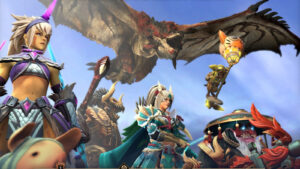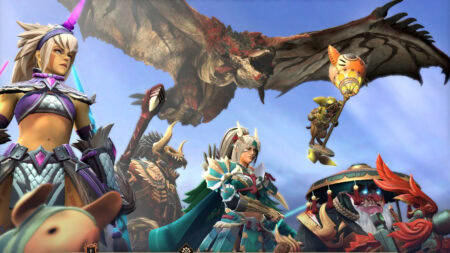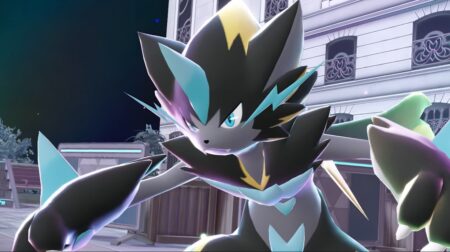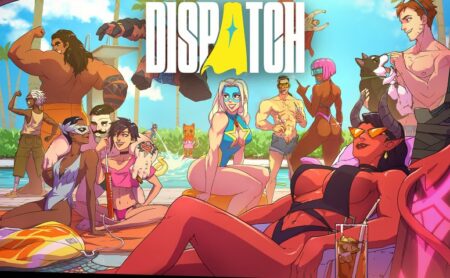Platform Reviewed: PS2
Platforms Available: PS2, PS Vita
Publisher: Atlus
Developer: Atlus
Release Date: July 10, 2008
MSRP: USD $19.99 (Php 923.45)
When Persona 3 hit the west, it left such a big impression that had the fan base wanting more. Years later, Atlus delivered when they released Persona 4. Does it live up to the hype Persona 3 left behind? Read on to find out
Persona 4 takes the same familiar themes that the third game had such as fighting physically manifested shadows and summoning your psyche to do combat with aforementioned shadows. This time though, the game takes a much more upbeat twist to it, heavily contrasting the dark and gloomy atmosphere that Persona 3 had. While the previous game had most of the action take place in the big city with the dungeon segments taking place in the tower of Tartarus, much of Persona 4’s gameplay takes place in the quiet rural town of Inaba while the dungeon segments happen in the TV world. TV world you say? Well we’ll talk about that later in the review.

Now the first thing players will notice about the game is just how bright everything is. An incredibly eye-catching shade of yellow is dominant in the interface. The background also boasts a much brighter look and each of the game’s party members carry a distinct color scheme to them that really sets them apart from each other. This upbeat theme is also prevalent in the designs of the game’s titular Personas. Once again the choice for aesthetic designs were drawn by series veteran Shigenori Soejima. The Personas of the protagonists this time are themed after characters from Japanese myth but are given a more modern, vibrant twist to help match them better with their users. Each persona is distinct in design and really captures their user’s personality.
Since it uses the same engine as the previous game, a lot of Persona 4‘s mechanics are carried over from 3. There are still segments where you explore the town of Inaba and socialize with your friends and raise Social Links. Social Links are a mechanic that carried over from 3 where your friendships with certain characters in the game affect your Persona fusions positively. Have stronger Social Links, fuse stronger Personas. It’s a system that makes up a nice chunk of the game’s non-combat gameplay and pushes the player along the character-driven nature of the game. Some of the game’s social links even allow the player to engage in an intimate relationship with that NPC. There is literally nothing stopping the player from engaging in acts of rampant polygamy, so one is free to indulge in their harem fantasies if they so desire.
The other half of the game consists of the dungeon crawling that the Persona series is known for. Unlike Persona 3 where there’s just one giant tower that the player traverses through, Persona 4 has the player going through multiple different dungeons with each a different theme. Though this does not make dungeon crawling any less tiresome, it does help make it feel a lot less boring since you’re greeted with a different atmosphere with every new dungeon. As for the combat itself, a lot of the combat is made simplified to make it a more streamlined process for players.
It’s the standard fair for turn based JRPG combat. The player takes control of four party members of choice (unlike Persona 3 where you only had access to one and the other three are AI controlled) and take turns dishing out damage to the enemies. The players have an option of using physical attacks and summoning their Personas for physical and magical skills. While the previous games had a myriad of different physical types which enemies had a varying weaknesses and resistances to, Persona 4 narrowed it down to just one type. This sacrificed some of the earlier game’s strategic elements in favor of a simpler approach to combat, something that makes the game easier for beginners to get into.

Despite the changes to the way physical attacks are done, the game still retains it’s strategic core in the usage of the elemental weaknesses. Attacking an enemy for it’s weakness knocks them down, allowing you another free attack. Knock down all the enemies in one turn, and you can initiate an all out attack for massive damage. Beware as the elements can also be turned against you as players are also susceptible to being knocked down for their elemental weaknesses. Thus, careful thought is often put into what kind of attack can be used on which enemy. The concept is familiar enough to Persona veterans while remaining a simple enough mechanic for people new to the series to understand.
A recurring feature carried over from 3 that makes the game’s main protagonist unique from the rest of the party is that while they are locked to whatever Personas they have, the main protagonist has the freedom to switch between any of his Personas in the middle of battle. This allows for some strategic flexibility as the player can tailor their stock of Personas to cover all of their bases in terms of weaknesses. Personas can be obtained by random drops in battle and also as products from fusing Personas. Persona fusion can be performed in the velvet room, and while the player initially starts with just being able to fuse up to three Personas at a time, special fusions that allow for more Personas to be used are made available later in the game. With the game’s vast library of Personas, it’s expected that the player will be spending a lot of time in the velvet room trying out all possible fusions. Personas level slowly, so it’s often recommended to fuse often. It’s this constant evolution that keeps the player’s Persona stock from getting too stale.
Combat is nice and fluid so traversing through dungeons doesn’t feel like a chore. The enemies also appear as blobs on the dungeon map so players are free to either initiate combat for a first turn advantage or avoid them to skip on unnecessary combat. One thing that accompanies the game and is also another series mainstay is the game’s excellent soundtrack once again composed by series veteran, Shoji Meguro. The game’s BGM for every scenario just fits in well with the mood the scene is trying to set. The zany, catchy, engrish ridden tracks reflect the incredibly upbeat feel the game has. Even serious moments get their share of appropriate soundtrack as ominous piano pieces highlight the more sinister machinations going on behind Inaba’s thick fog. With all the times that you will be hearing it, by the end of the game, you’d most probably find yourself humming to the game’s combat theme.

What drives most of the gameplay for most JRPG games is the plot. While Persona 4‘s plot is far from shallow, a lot of the overall plot could use more depth. The game starts with a series of mysterious murders and rumors are spread about a strange TV channel that only shows up during midnight on a rainy day. Your protagonist investigates the latter and finds himself sucked inside the TV. Here he and his friends find that a whole new world lies behind the TV and that is somehow linked to the mysterious murders. What also lies within the TV world are physical shadows made up of humanity’s negative emotions. Some of these shadows are special and embody the side of our psyche that we subconsciously deny. Defeating these shadows and overcoming one’s shortcomings turn said shadow into one’s Persona.
While these maybe interesting concepts, the deeper concepts behind them aren’t really explored all that well. Instead, what the protagonists spend most of their time on is chasing after the murderer and saving whoever gets thrown in the TV. Almost more than half of the game is spent saving people and recruiting them into your party. The main plot doesn’t really go anywhere until later into the game and most of the segments leading up to that feel rather routine. When the game does reach the climax, a lot of the game’s drama and tension feel rather forced. Up until that point in the game, all the protagonists were really concerned about was catching the murderer so it doesn’t really feel like much is at stake. The game does force you to save people thrown into the TV by giving you a deadline, but it’s so hard to take the situation seriously when the game also urges you to take some time to socialize.
While the game’s main plot leaves much to be desired, where the game really shines are it’s characters. Each one of them has a distinct personality. Watching these personalities interact with each other often leads to some interesting dialogue. Due to the nature of how the confrontations with a person’s shadow shows their darker side of them, these resurfacing insecurities and traits help give the protagonists a great deal of depth. Not everyone in the cast is exactly as they seem at first. The fact that the game makes every single one of your party members a social link means that you get to know each and every single one of them even better (and yes, this also means you can start a relationship with all your female party members). The game rewards this by improving their combat performance the closer they are with you like taking a mortal blow for you for example. Reaching the maximum level of friendship with a party member results in them overcoming their insecurities and finding new resolve in life. This is represented by their personas evolving, taking a new form and becoming more powerful.

While the game’s characters may be interesting and their flaws make them more rounded, there are some character quirks that may irritate players such as the female party members being excessively mean to Yosuke, the resident butt of the jokes. Some players may also be put off by Yosuke’s rather sexist comments at times and the party’s non-human mascot character Teddie’s attempts at picking up girls may seem almost borderline harassment. One last fault that lies within the characters are that in the overall scheme of things, just like the main plot, they really don’t have that much at stake. Their personal conflicts aren’t really all that tragic so their shadow selves rarely come across as personified trauma and more often come across as petty problems. Then again, this makes the problems of the cast somewhat relatable for common people.
In the end, a lot of the faults with the game’s plot and cast stem from it’s attempt at a more lighthearted approach. Could it have been done better? Yes. Does that make it a bad thing? No. The game’s plot may lack some gravity to it, but what it does set you up for is an enjoyable ride with enjoyable characters living out an enjoyable, youthful high school life. There are fun memories to be had with the cast and by the end of the game, you’ll feel like there’s a hole in their life where the cast used to be. Upon finishing the game, there really isn’t much left to do but hit 100% on the Persona compendium and max all your social links.
Overall, the game can be summarized in one word, fun. The combat system may have been dumbed down a bit to cater to newer fans, but in no way does it dilute the overall experience. The Scooby-doo-mystery-inc plot may not be the most inspired of storylines, but the game will hook you in with it’s quirky, colorful, and likeable cast. Everything about the game just screams upbeat from the interface to the catchy pop BGM. A great sequel to an already great game, Persona 4 takes the more light hearted and upbeat approach to the JRPG series. If you’re looking for a gritty and serious JRPG that tackles some deep philosophical themes, Persona 3 might be more appropriate for you, but if you’re just looking for a fun ride through and through, then Persona 4 may just be the game for you.
If you want more Persona 4 in your life, stick around as we’ll review the PS Vita rerelease next, Persona 4 Golden.






